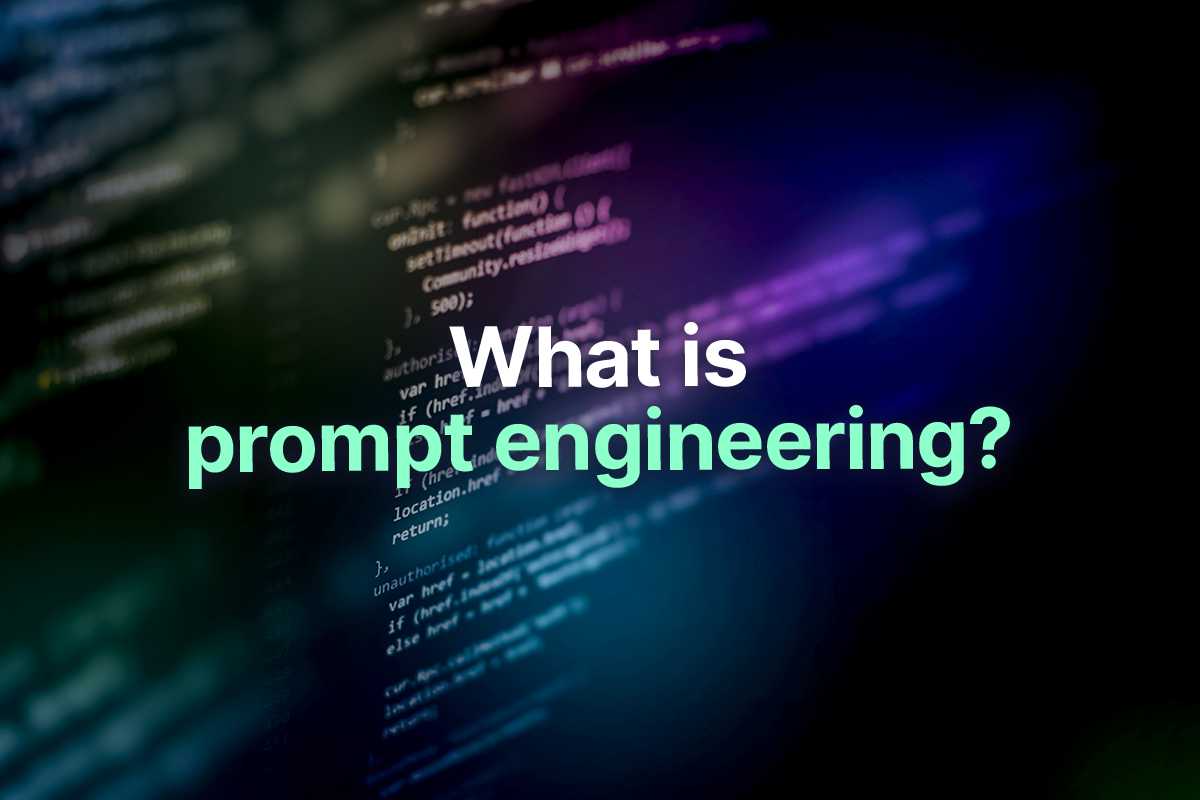Whether it’s quantum computing, the blockchain, or generative AI, whenever a promising new technology emerges, forward-thinking people begin looking for a way to use it.
And this is a completely healthy response. It’s through innovation that the world moves forward, but great ideas don’t mean much if there aren’t people like contact center managers who use them to take their operations to the next level.
Today, we’re going to talk about what large language models (LLMs) like ChatGPT mean for contact centers. After briefly reviewing how LLMs work we’ll discuss the way they’re being used in contact centers, how those centers are changing as a result, and some things that contact center managers need to look out for when utilizing generative AI.
What are Large Language Models?
As their name suggests, LLMs are large, they’re focused on language, and they’re machine-learning models.
It’s our view that the best way to tackle these three properties is in reverse order, so we’ll start with the fact that LLMs are enormous neural networks trained via self-supervised learning. These neural networks effectively learn a staggeringly complex function that captures the statistical properties of human language well enough for them to generate their own.
Speaking of human language, LLMs like ChatGPT are pre-trained generative models focused on learning from and creating text. This distinguishes them from other kinds of generative AI, which might be focused on images, videos, speech, music, and proteins (yes, really.)
Finally, LLMs are really big. As with other terms like “big data” no one has a hard-and-fast rule for figuring out when you’ve gone from “language model” to “large language model” – but with billions of internal parameters, it’s safe to say that an LLM is a few orders of magnitude bigger than anything you’re likely to build outside of a world-class engineering team.
How can Large Language Models be Used in Contact Centers?
Since they’re so good at parsing and creating natural language, LLMs are an obvious choice for enterprises where there’s a lot of back-and-forth text exchanged, perhaps while, say, resolving issues or answering questions.
And for this reason, LLMs are already being used by contact center managers to make their agents more productive (more on this shortly).
To be more concrete, we turned up a few specific places where LLMs can be leveraged by contact center managers most effectively.
Answering questions: Even with world-class documentation, there will inevitably be customers who are having an issue they want help with. Though ChatGPT won’t be able to answer every such question, it can handle a lot of them, especially if you’ve fine-tuned it on your documentation.
Streamlining onboarding: For more or less the same reason, ChatGPT can help you onboard new hires. Employees learning the ropes will also be confused about parts of your technology and your process, and ChatGPT can help them find what they need more quickly.
Summarizing emails and articles: It might be possible for a team of five to be intimately familiar with what everyone else is doing, but any more than this and there will inevitably be things happening that are beyond their purview. By summarizing articles, tickets, email or Slack threads, etc., ChatGPT can help everyone stay reasonably up-to-date without having to devote hours every day to reading.
Issue prioritization: Not every customer question or complaint is equally important, and issues have to be prioritized before being handed off to contact center agents. ChatGPT can aid in this process, especially if it’s part of a broader machine-learning pipeline built for this kind of classification.
Translation: If you’re lucky enough to have a global audience, there will almost certainly be users who don’t have a firm grasp of English. Though there are tools like Google Translate that do a great job of handling translation tasks, ChatGPT often does an even better job.
What are Large Language Models for Customer Service?
Large language models are ideally suited for tasks that involve a great deal of working with text. Because contact center agents spend so much time answering questions and resolving customer issues, LLMs are a technology that can make them far more productive. ChatGPT excels at tasks like question answering, summarization, and language translation, which is why they’re already changing the way contact centers function.
How is Generative AI Changing Contact Centers?
The fear that advances in AI will lead to a decrease in employment among inferior human workers has a long and storied pedigree. Still, thus far the march of technological progress has tended to increase the number (and remuneration) of available jobs on the market.
Far from rendering human analysts obsolete, personal computers are now a major and growing source of new work (though, we confess, much less of it is happening on typewriters than before.)
Nevertheless, once people got a look at what ChatGPT can do there arose a fresh surge of worry over whether, this time, the robots were finally going to take all of our jobs.
Wanting to know how generative pre-trained language models have actually impacted the functioning of contact centers, Erik Brynjolfsson, Danielle Li, and Lindsey R. Raymond looked at data from some 5,000 customer support agents using it in their day-to-day work.
Their paper, “Generative AI at Work”, found that generative AI had led to a marked increase in productivity, especially among the newest, least-knowledgable, and lowest-performing workers.
The authors advanced the remarkable hypothesis that this might stem from the fact that LLMs are good at internalizing and disseminating the hard-won tacit knowledge of the best workers. They didn’t get much out of generative AI, in other words, precisely because they already had what they needed to perform well; but some fraction of their skill – such as how to phrase responses delicately to avoid offending irate customers – was incorporated into the LLM, where it was more accessible by less-skilled workers than it was when it was locked away in the brains of high-skilled workers.
What’s more, the organizations studied also changed as a result. Employees (especially lower-skilled ones) were generally more satisfied, less prone to burnout, and less likely to leave. Turnover was reduced, and customers escalated calls to supervisors less frequently.
Now, we hasten to add that of course this is just one study, and we’re in the early days of the generative AI revolution. No one can say with certainty what the long-term impact will be. Still, these are extremely promising early results, and lend credence to the view that generative AI will do a lot to improve the way contact centers onboard new hires, resolve customer issues, and function overall.
What are the Dangers of Using ChatGPT for Customer Service?
We’ve been singing the praises of ChatGPT and talking about all the ways in which it’s helping contact center managers run a tighter ship.
But, as with every technological advance stretching clear back to the discovery of fire, there are downsides. To help you better use generative AI, we’ll spend the next few sections talking about some characteristic failure modes you should be looking out for.
Hallucinations
By now, it’s fairly common knowledge that ChatGPT will just make things up. This is a consequence of the way LLMs like ChatGPT are trained. Remember, the model doesn’t contain a little person inside of it that’s checking statements for accuracy; it’s just taking the tokens it has seen so far and predicting the tokens that will come next.
That means if you ask it for a list of book recommendations to study lepidoptery or the naval battles of the Civil War (we don’t know what you’re into), there’s a pretty good chance that the list it provides will contain a mix of real and fake books.
ChatGPT has been known to invent facts, people, papers (complete with citations), URLs, and plenty else.
If you’re going to have customers interacting with it, or you’re going to have your contact center agents relying on it in a substantial way, this is something you’ll need to be aware of.
Degraded Performance
ChatGPT is remarkably performant, but it’s still just a machine learning model and machine learning models are known to suffer from model degradation.
This term refers to gradual or precipitous declines in model performance over time. There are technical reasons why this occurs, but from your perspective, you need to understand that the work has only begun once a model has been trained and put into production.
But you’re also not out of the woods if you’re accessing ChatGPT via an API, because you have just as little visibility into what’s happening on OpenAI’s engineering teams as the rest of us do.
If OpenAI releases an update you might suddenly find that ChatGPT fails in usual ways or trips over tasks it was handling very well last week. You’ll need to have robust monitoring in place so that you catch these issues if they arise, as well as an engineering team able to address the root cause.
Model degradation often stems from issues with the underlying data. This means that if you’ve e.g. trained ChatGPT to answer questions you might have to assemble new data for it to train on, a process that takes time and money and should be budgeted for.
Harassment and Bias
You could argue that harassment, bias, and harmful language are a kind of degraded performance, but they’re distinct and damaging enough to warrant their own section.
When Microsoft first released Sydney it was cartoonishly unhinged. It would lie, threaten, and manipulate users; in one case, it confessed both its love for a New York Times reporter along with its desire to engineer dangerous viruses and ignite internecine arguments between people.
All this has gotten much better, of course, but the same behavior can manifest in subtler ways, especially if someone is deliberately trying to jailbreak a large language model.
Thanks to extensive public testing and iteration, the current versions of the technology are very good at remaining polite, avoiding stereotyping, etc. Nevertheless, we’re not aware of any way to positively assure that no bias, deceit, or nastiness will emerge from ChatGPT.
This is another place where you’ll have to carefully monitor your model’s output and make corrections as necessary.
Using LLMs in your Contact Center
If you’re running a contact center, you owe it to yourself to at least check out ChatGPT. Whether it makes sense for you will depend on your unique circumstances, but it’s a remarkable new technology that could help you make your agents more effective while reducing turnover.
Quiq offers a white-glove platform that makes it easy to leverage conversational AI. Schedule a demo with us to see how we can help you incorporate generative AI into your contact center today!



